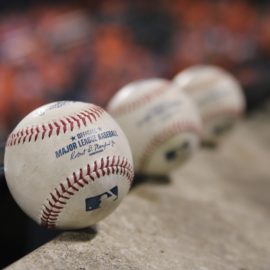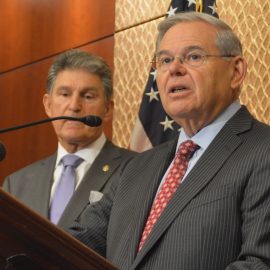

This article is an excerpt from the Shortform summary of "Moneyball" by Michael Lewis. Shortform has the world's best summaries of books you should be reading.
Like this article? Sign up for a free trial here .
Who is Sandy Alderson? What was Sandy Alderson’s role in Moneyball?
Sandy Alderson was the general manager of the A’s when Billy Beane made his transition to the front office. He was considered a baseball outsider by many within the organization, mainly because he had never played baseball himself.
Not only did Sandy Alderson hire Billy Beane to work in the A’s front office, but he also was an early proponent of Bill James and Sabermetrics. Sandy Alderson’s strategies eventually find a new home with Billy Beane, as he rises through the ranks to Oakland A’s GM.
Sandy Alderson: A New Philosophy
Because Sandy Alderson has never played baseball, he is unbiased and unattached to baseball’s customary way of doing things and open to new approaches to the game.
He observes that most of the things baseball insiders love about the game and value most in players—particularly big, flashy plays like home runs and stolen bases—do little over the course of a season to help the team score runs and win games. Simply put, most of the things major league baseball teams do don’t actually work.
Because after all, the purpose of a baseball team isn’t to compile home runs or a high batting average: it’s to score runs and win games. Therefore, every player and every play ought to be judged solely on the basis of how it contributes to the win column. Alderson, now in charge of spending the team’s suddenly scarce funds, needs to ensure that every penny is spent wisely.
Sandy Alderson pioneers a scientific, data-driven, and top-down approach to managing a baseball team. He thinks little of the opinions and collective wisdom of the old baseball men and is dismissive of the yardsticks by which they measure performance.
He is particularly critical of batting average statistics, and the way in which coaches and scouts treat them as the gold standard for success. Batting average is simply the ratio of hits to total at bats. If a player has five plate opportunities in a game and scores two hits, he has a batting average of .400 (2 hits/5 at bats). Yet in running the numbers, Sandy Alderson sees that total team batting average, for all the emphasis the old guard places upon it, bears little relation with total runs scored. Alderson concludes that a high batting average does little to actually win games.
Drawing Walks
To drill a bit further, there is a reason that batting average has such a weak correlation with runs—hits are not the only way that a batter can get on base. Batting average overlooks the importance of walks to a team’s total offensive output.
The batting average statistics sharply undervalue a player’s ability to get on base by drawing walks. Players who are good at this aren’t flashy home run hitters, but they contribute heavily to runs scored and, most importantly for Sandy Alderson, are deeply undervalued (and underpriced) by most teams. Drawing walks is a subtle skill—it relies on the hitter knowing when not to swing, being patient, and studying a pitcher’s throwing tendencies.
This is at odds with the traditional view of walks, namely, that they are entirely produced by pitcher error, and that the batter has no agency in creating them. But Alderson rejects this passive view, arguing that a hitter plays a significant role in drawing walks. Traditional baseball’s free-swinging ethos, meanwhile, conditions players to look for an opportunity to belt one out of the park, rather than contributing to team offense through walks.
On-Base Percentage
Sandy Alderson sees that another statistic provides a much better prediction of offensive output: on-base percentage. This measure tells you how often a batter got on base, including by walks. Essentially, on-base percentage is the probability of a batter making an out. And this is the measure that Alderson seeks to spread like gospel through the Oakland organization.
There is a simple, strong logic to Sandy Alderson’s new philosophy. During a team’s hitting portion of an inning, anything is possible before they’ve made three outs; thus, the primary goal of the offense should be to avoid making outs. Any play which increases a team’s chances of making an out is bad; any play which decreases the chances of making an out is good. Therefore, increasing on-base percentage should be the primary focus.
Sandy Alderson Attempts to Change the Organizational Culture
All of this is a radical departure in thinking on Sandy Alderson’s part, one that sets him apart from the old baseball minds within his organization, including then-manager Tony La Russa. The latter believes that scoring is a product of a series of flashy plays by individual players; Alderson believes that scoring is a team-wide process. Every ball, every walk, every hit, every avoided out contributes incrementally to runs.
Sandy Alderson is evangelical in his emphasis on on-base percentage. While he sees some success in implementing his ideas in Oakland’s minor league affiliates, his philosophy hits a brick wall with the big club in Oakland, where traditional attitudes still prevail. Alderson’s revolution remains incomplete.
The Conversion of Billy Beane
Indeed, the very presence of Billy Beane on the roster, a player who liked to swing at every pitch, shows how little currency Sandy Alderson’s ideas have at this time. But Alderson is an important figure for Billy, one who shows him that it is possible to apply intellectual rigor and analysis to baseball. By the mid-1990s, Billy has risen through the ranks of the organization to become a talent scout. He is a supporter of Alderson’s approach and wants to apply these principles to his new position. He asks Alderson where he has gotten his ideas from, and Alderson directs him to the works of a writer named Bill James.
Reading James is a turning point for Billy. He goes from being merely a supporter of this new approach to baseball, to a true believer. For, by this point, James’s ideas are beginning to reshape how intelligent general managers and scouts look at the game.
Sandy Alderson may have been considered a baseball outsider by many, but he finds success in data-driven baseball, and fellow converts, like Billy Beane, continue to reinvent the game.

———End of Preview———
Like what you just read? Read the rest of the world's best summary of Michael Lewis's "Moneyball" at Shortform .
Here's what you'll find in our full Moneyball summary :
- How Billy Beane first flamed out as a baseball player before becoming a general manager
- The unconventional methods the Athletics used to recruit undervalued players
- How Sabermetrics influences American baseball today






